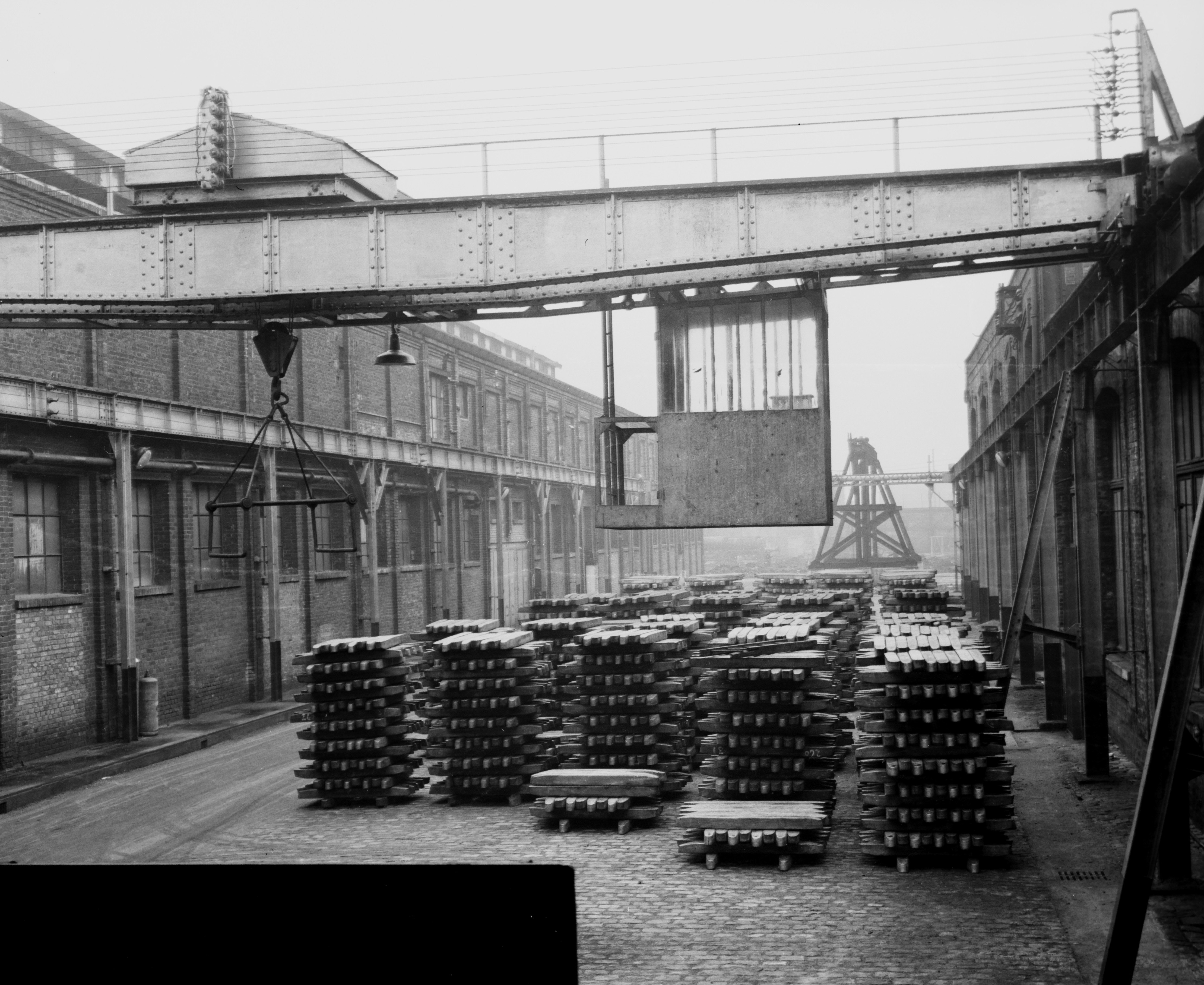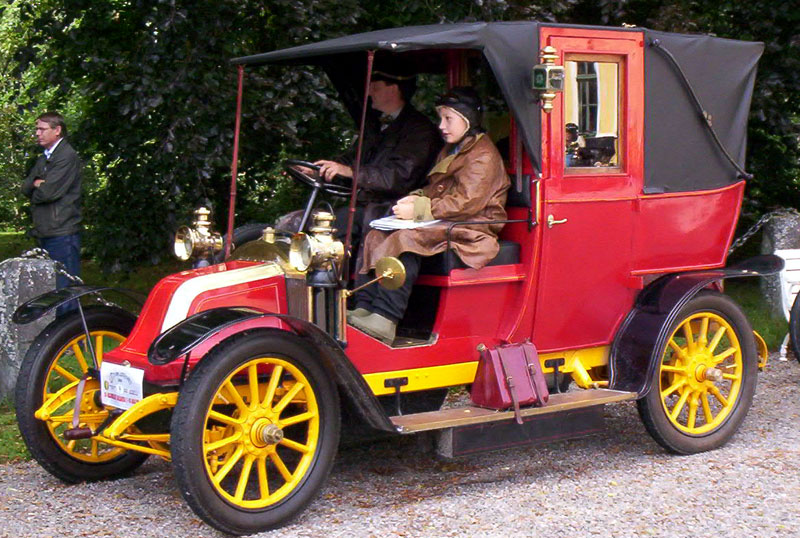|
TrĂŠfimĂŠtaux SA
TrÊfimÊtaux is a French metallurgy conglomerate formed in 1962 by the merger of the TrÊfileries et Laminoirs du Havre with the Compagnie française des mÊtaux. In 1967, TrÊfimÊtaux was acquired by Pechiney and in 1987 was sold to the Italian company SMI. Various plants were closed or sold over the years, leaving two factories in France at Givet (copper and brass tubes) and Niederbruck (copper bars). These factories are now operated by TrÊfimÊtaux SAS, a subsidiary of Cupori (60%) and SMI (40%). Independent company The SociÊtÊ J. Laveissière et Cie was founded in 1812 to manufacture copper products. In 1881 it was merged with the SociÊtÊ anonyme des Êtablissements SecrÊtan to form the SociÊtÊ industrielle et commerciale des mÊtaux. In 1900 it became the Compagnie française des mÊtaux, employing 500 workers in a factory in Saint-Denis. TrÊfileries et Laminoirs du Havre has its origins in the SociÊtÊ Lazare Weiller, created in 1883 by Lazare Weiller (1858 ... [...More Info...] [...Related Items...] OR: [Wikipedia] [Google] [Baidu] |
TrĂŠfileries Et Laminoirs Du Havre
The TrĂŠfileries et Laminoirs du Havre (TLH: Le Havre Wire-Drawing and Rolling Mills) was an enterprise based in Le Havre, France, that manufactured copper wire, other copper products and products of other metals including bronze and aluminum. It was founded to serve the rapidly growing market for electrical power transmission and for telegraph and telephone cables. It grew into a massive industrial empire with factories in many French cities and abroad. In 1962 it merged with the Compagnie française des mĂŠtaux and became TrĂŠfimĂŠtaux. In 1967 TrĂŠfimĂŠtaux was acquired by Pechiney. The various plants were closed or sold over the years. Founder The company was created by Lazare Weiller (1858â1928), who was born in the small town of SĂŠlestat in Alsace on 20 July 1858. He studied in AngoulĂŞme and Paris, and then in Trinity College, Oxford. He returned to AngoulĂŞme to work in his cousin's factory, which produced metal sheets for the paper industry. He became interested in th ... [...More Info...] [...Related Items...] OR: [Wikipedia] [Google] [Baidu] |
Pirelli
Pirelli & C. S.p.A. is an Italian multinational tyre manufacturer based in the city of Milan, Italy. The company, which has been listed on the Borsa Italiana since 1922, is the 5th-largest tyre manufacturer, and is focused on the consumer production of tyres for cars, motorcycles and bicycles. It is present in Europe, the Asia-Pacific, Latin America, North America, and the post-Soviet states, operating commercially in over 160 countries. It has 19 manufacturing sites, across 13 countries, and a network of around 14,600 distributors and retailers. In 2015, China National Chemical Corp. Ltd. ( ChemChina) took controlling interest of Pirelli; with the Chinese state-owned company agreeing to maintain the tyre company's ownership structure until 2023. Pirelli has been sponsoring sport competitions since 1907 and is the exclusive tyre partner and supplier for the Grand-Am Rolex Sports Car Series for 2008â2010, FIA Formula One World Championship for 2011âpresent and for the FI ... [...More Info...] [...Related Items...] OR: [Wikipedia] [Google] [Baidu] |
Metal Companies Of France
A metal () is a material that, when polished or fractured, shows a lustrous appearance, and conducts electrical resistivity and conductivity, electricity and thermal conductivity, heat relatively well. These properties are all associated with having electrons available at the Fermi level, as against nonmetallic materials which do not. Metals are typically ductile (can be drawn into a wire) and malleable (can be shaped via hammering or pressing). A metal may be a chemical element such as iron; an alloy such as stainless steel; or a molecular compound such as polythiazyl, polymeric sulfur nitride. The general science of metals is called metallurgy, a subtopic of materials science; aspects of the electronic and thermal properties are also within the scope of condensed matter physics and solid-state chemistry, it is a multidisciplinary topic. In colloquial use materials such as steel alloys are referred to as metals, while others such as polymers, wood or ceramics are nonmetallic ... [...More Info...] [...Related Items...] OR: [Wikipedia] [Google] [Baidu] |
Pori
Pori (; ; ) is a city in Finland and the regional capital of Satakunta. It is located on the west coast of the country, on the Gulf of Bothnia. The population of Pori is approximately , while the Pori sub-region, sub-region has a population of approximately . It is the most populous Municipalities of Finland, municipality in Finland, and the eighth most populous List of urban areas in Finland by population, urban area in the country. Pori is located some from the Gulf of Bothnia, on the estuary of the Kokemäki River, west of Tampere, north of Turku and north-west of Helsinki, the capital of Finland. Pori covers an area of of which is water. The population density is . Pori was established in 1558 by Duke John of Finland, Duke John, who later became King John III of Sweden. The municipality is unilingually Finnish. Pori was also once one of the main cities with Turku in the former Turku and Pori Province (1634â1997). The neighboring municipalities are Eurajoki, Kankaanp ... [...More Info...] [...Related Items...] OR: [Wikipedia] [Google] [Baidu] |
Serravalle Scrivia
Serravalle Scrivia is a ''comune'' (municipality) in the Province of Alessandria in the Italian region of Piedmont, located about southeast of Turin and about southeast of Alessandria. Serravalle Scrivia borders the following municipalities: Arquata Scrivia, Cassano Spinola, Gavi, Novi Ligure, Stazzano, and Vignole Borbera. History The settlement was probably founded by the inhabitants of the Roman city of Libarna after the destruction of that city in 452 AD. From 1122 Serravalle Scrivia belonged to the bishops of Tortona, until they ceded it to the commune of Tortona, in exchange for the defence of their lands. Later it was an imperial fief, belonging to the Spinola (1313), the Visconti (1381), the Adorno (1391), and the Spinola again from 1482. In 1580 it became part of the Spanish-held Duchy of Milan; after the War of the Spanish Succession, in 1713, it became part of the Austrian Empire. In 1738, together with the Tortona area, the settlement was acquired by the ... [...More Info...] [...Related Items...] OR: [Wikipedia] [Google] [Baidu] |
Niederbruck
Niederbruck (; ) is a former commune in the Haut-Rhin department in north-eastern France. On 1 January 2016, it was merged into the new commune Masevaux-Niederbruck. 22 December 2015 See also *Communes of the Haut-Rhin department
The following is a list of the 366 Communes of France, communes of the French Departments of France, department of Haut-Rhin.
The communes cooperate in the following Communes of France#Intercommunality, intercommunalities (as of 2025):
References [...More Info...] [...Related Items...] OR: [Wikipedia] [Google] [Baidu] |
Givet
Givet () (; ) is a commune in the Ardennes department in northern France surrounded on three sides by the Belgian border. It lies on the river Meuse where Emperor Charles V built the fortress of Charlemont. It borders the French municipalities of Fromelennes to the east and Rancennes to the south and Foisches to the southeast. The Pointe de Givet National Nature Reserve is partly located on the commune. History The town's history claims that Saint Hubert lived there in 720 and performed a miracle. The town has changed hands several times since the Roman era before becoming part of France in 1678, and was later invaded by Russians and Germans. During the Nine Years' War in 1696 Givet functioned as a supply depot for the French army and was bombarded by and Anglo-Dutch force under Menno van Coehoorn. During the Napoleonic Wars, the French maintained a camp here for British naval prisoners of war from 1804 to 1814. One of the officer prisoners, Captain Jahleel Bre ... [...More Info...] [...Related Items...] OR: [Wikipedia] [Google] [Baidu] |
KME Group
The KME Group is a manufacturer of metal products, primarily copper. Their products included rolled copper, copper tubes, bars, and cables. They are stated to be one of the world's largest copper producers. It was formed from the merging of several copper producers: Kabelmetal AG in OsnabrĂźck (formerly called OKD - OsnabrĂźcker Kupfer und Drahtwerke), Stolberger Metallwerke, TrĂŠfimĂŠtaux SA in France, and Europa Metalli. History The company began production as the SMI (Societa Metallurgica Italiana) in 1886 in Italy. In 2018, KME bought German copper product producer Mansfelder Kupfer. The acquisition was investigated by the European Commission. In 2022, the company completed the purchase of multimetal supplier Aurubis flat rolled products segment (including factorites) across several countries. In February 2024, the company completed an equity transaction deal aimed at listing its Cunova business unit on the New York Stock Exchange (NYSE). Operations The groups corporate ... [...More Info...] [...Related Items...] OR: [Wikipedia] [Google] [Baidu] |
Le Havre
Le Havre is a major port city in the Seine-Maritime department in the Normandy (administrative region), Normandy region of northern France. It is situated on the right bank of the estuary of the Seine, river Seine on the English Channel, Channel southwest of the Pays de Caux, very close to the Prime Meridian (Greenwich), Prime Meridian. Le Havre is the most populous commune of Upper Normandy, although the total population of the greater Le Havre conurbation is smaller than that of Rouen. It is also the second largest subprefecture in France, after only Reims. The name ''Le Havre'' means "the harbour" or "the port". Its inhabitants are known as ''Havrais'' or ''Havraises''. The city and Port of Le Havre, port were founded by Francis I of France, King Francis I in 1517. Economic development in the early modern period was hampered by European wars of religion, religious wars, conflicts with the English, epidemics, and storms. It was from the end of the 18th century that Le Havre st ... [...More Info...] [...Related Items...] OR: [Wikipedia] [Google] [Baidu] |
Compagnie Française Des MÊtaux
The Compagnie française des mĂŠtaux (CFM) was a French metallurgy company founded in 1892 that acquired the assets of a predecessor that had gone into liquidation. The company operated a number of plants in different locations in France, mainly making copper and aluminum products. In 1962 it was merged with TrĂŠfileries et Laminoirs du Havre to form TrĂŠfimĂŠtaux. Predecessors The SociĂŠtĂŠ J. Laveissière et Cie was founded in 1812 to manufacture copper products. The Compagnie française des mĂŠtaux was created in 1867 in Saint-Denis on a site. It processed red copper and brass, and employed 500 workers. The plant was at 72 rue Ambroise Croisat. In 1869 Pierre-Eugène SecrĂŠtan (1836â1899) bought a copper and brass mill in the village of SĂŠrifontaine on the Epte river about northwest of Paris. The plant had been set up by the dâArlincourt family in 1833â35 as a zinc and brass foundry and rolling mill. SecrĂŠtan later donated the copper sheets that cover the Statue ... [...More Info...] [...Related Items...] OR: [Wikipedia] [Google] [Baidu] |
Lazare Weiller
Lazare Weiller (20 July 1858 â 12 August 1928) was a French engineer, industrialist, and politician. He was born in Alsace and received a technical education in England and in his cousin's copper factory in AngoulĂŞme. He was very interested in the physical sciences, particularly the use of electricity to transmit sound and images. He proposed a system for scanning, transmitting and displaying images that was the basis for experiments by various television pioneers. He sponsored early aviation experiments by the Wright brothers. He founded several companies including a telephone wire manufacturer, a taximeter manufacturer, the first Parisian cab company to use automobiles, an aircraft company and a wireless telegraphy company. He was a deputy during World War I (1914â18) and then a senator until his death. Life Lazare Weiller was born in SĂŠlestat, Bas-Rhin, on 20 July 1858. His parents were Leopold Weiller (born 1807) and Reine Ducasse/Duckes (born 1819). He came from a Jewi ... [...More Info...] [...Related Items...] OR: [Wikipedia] [Google] [Baidu] |




